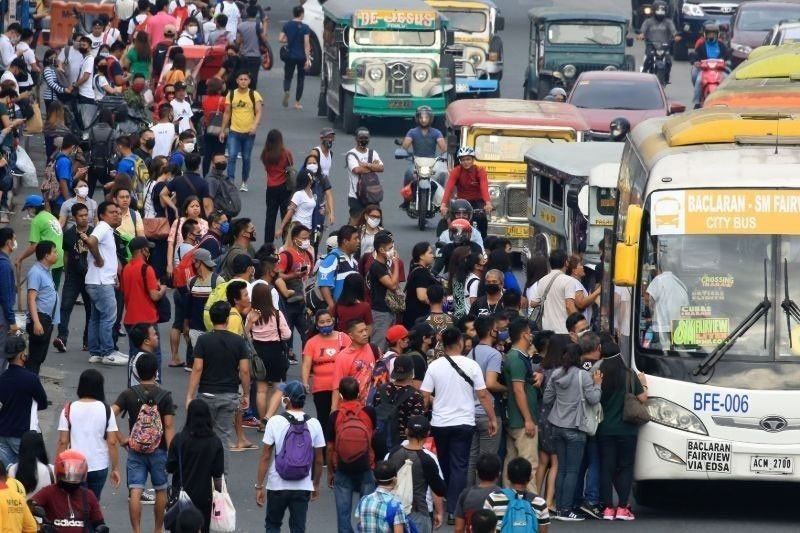Making public transportation work better for Filipinos

Special Report
MANILA, Philippines — The road to making Filipino lives comfortable through an improved public transportation took some turns for the better – and worse – last year amid the pandemic.
Government policies and projects implemented in the country’s transport sector were considered a hit-and-miss affair, with more misses than hits, according to stakeholders.
But in a year full of challenges, the Department of Transportation (DOTr) said it remained undeterred and continued to pursue the construction of mass transport infrastructure solutions that would greatly benefit the Filipino people in the long-term.
“The transport sector remains beset by a DOTr leadership in disarray,” Terry Ridon, convenor of infrastructure think tank Infrawatch PH, told The STAR.
“Despite boasting the completion of projects in several transport sectors, the department has failed to show leadership in countless transport policy questions last year,” Ridor said.
According to Ridor, among these “problematic” policies are the implementation of the automatic fare collection system (AFCS) in EDSA busways, radio-frequency identification (RFID) in tollways, Ninoy Aquino International Airport (NAIA) rehabilitation, and the push for PUV modernization despite the coronavirus crisis.
“For these issues, we have seen a leadership that is not in control of its various agencies. We have seen a leadership that iterates ill-prepared proposals, only to step back after public criticism,” he said.
For Ridon, the DOTr should focus on avoiding initiatives that appear ill-conceived and ill-planned. He said most major controversies involving the agency could have been avoided had its leadership consulted with more stakeholders and sought wide support.
Consumer advocacy group The Passenger Forum (TPF), for its part, said interconnectivity of various transportation routes and different transportation options remains an issue that needs to be looked into.
The group said the current transport situation in the country also remains car-centric.
“There is nothing to be proud of the DOTr’s record for 2020. While there are valid excuses due to the pandemic, it also presented some opportunities that were not maximized,” TPF convenor Primo Morillo told The STAR.
Morillo said the attempt to use the COVID-19 pandemic to force the jeepney modernization program was very problematic, while the delay of the much-needed rehabilitation of NAIA, while there is low passenger volume, may be considered a wasted opportunity for the country.
But along with the heavily-criticized policies and projects were also positive developments arising in the sector.
Stakeholders lauded the digitalization of transactions in some public transport modes, which were implemented and accelerated due to the pandemic.
The MRT-3, which has suffered from deteriorating track and trains caused by poor maintenance, has also seen dramatic improvements, having been able to complete its rail replacement works way ahead of schedule in September last year.
The rail system is targeted to be restored to its original, “high-grade design” condition by the third quarter this year.
“What cannot be discounted is the agency’s commitment to complete pipeline projects, including those originated in previous administrations,” Ridon said.
Ridon said the Metro Manila subway also deserves praise as one of the novel projects originated under the current administration.
The DOTr eyes to complete the partial operability section of the P357-billion Metro Manila subway project, the country’s first underground rail system, by December.
Meanwhile, Financial Executives Institute of the Philippines national affairs committee chairman and busway advocate Eduardo Yap said the EDSA busway system, which was implemented last year has proven to be transformational.
“Public buses now run without interruption on the busway whether day or night, rain or shine. Commuters now reach their destination in less than a fourth of the usual time before. Even sick people in ambulances running on the busway now have better chance of getting the desperately needed medical care,” Yap said.
“Bus operators can quickly make turnaround trips on the new EDSA carousel route. Buses no longer contribute to congestion in the private car lanes,” he said.
According to Yap, a major hurdle to economic productivity had been removed by the improved mobility on EDSA.
On the contrary, the TPF noted that the EDSA busway has made things more difficult for commuters.
“We look at the EDSA bus carousel system as an effort to implement a bus rapid transit in Metro Manila, which may be considered as a good initiative. However, our members opine that the effort is lame because the EDSA carousel system made things more difficult for commuters rather than making commuting more convenient for the riding public,” Morillo said.
“First, interconnectivity with other routes is a big issue. Second, the number of buses deployed for the system is not sufficient for all commuters especially during rush hours. Third, the operating hours seem to change at the convenience of operators as less buses ply the routes late at night according to some of our members. Finally, the designation of the leftmost lane instead of the rightmost lane for the EDSA Carousel added too much burden to commuters especially to PWDs and the elderly,” he said.
Amid the prevailing challenges, the DOTr has assured the public that it would continue working on projects that would improve the country’s transportation landscape, thereby providing commuters and motorists a better experience.
The agency said it remains firm on its promise of completing game-changing developments, even with a little over 500 days left before the term of the current administration ends.
Stakeholders, for their part, have no choice but to continue to wait, in hopes of seeing these government promises fulfilled.
“An efficient and interconnected mass transportation system coupled with walkable metropolitan areas is the ideal scenario for us. We believe that 2021 is a good year to bounce back, seize opportunities for the sake of the riding public, and correct past mistakes,” Morillo said.
- Latest
- Trending






























